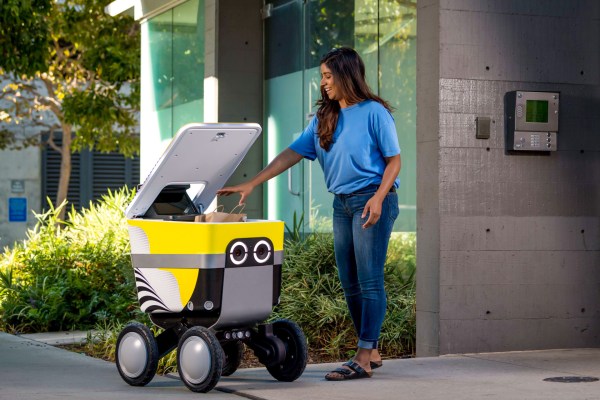Serve Robotics, the Uber spinout that builds autonomous sidewalk delivery robots, is expanding its partnership with Uber Eats. The Nvidia-backed startup will now deploy up to 2,000 of its cute little bots via Uber’s platform in multiple markets across the U.S.
The partnership is slated to last through the beginning of 2026.
This expansion not only validates Serve’s goal to mass commercialize robotics for autonomous delivery, but it also signals that Uber is furthering its commitment to autonomy. Last week, Uber announced Waymo’s autonomous vehicles would be available for ride-hail and delivery on Uber’s platform starting in Phoenix later this year. Uber is also working with Motional to deliver food in Santa Monica via the company’s self-driving Hyundai IONIQ 5s.
Serve and Uber’s partnership began a year ago as a pilot in West Hollywood. Since then, Serve’s robotic deliveries with Uber have grown more than 30% month-over-month, with over 200 restaurants in West Hollywood, Hollywood and Fairfax now participating. The bots now operate seven days a week from 10 a.m. to 9 p.m., according to Ali Kashani, co-founder and CEO of Serve.
“We expect our rapid growth on Uber Eats to continue,” Kashani told TechCrunch. “We currently have a fleet of 100 robots in Los Angeles, and we expect to operate an increasing number of them on Uber Eats as our coverage and delivery volume on Uber increases.”
That fleet is also shared with Serve’s other partners, like 7-Eleven, which recently launched robotic sidewalk delivery with Serve in LA.
Serve didn’t say which markets would be next for its partnership with Uber, but the company is eyeing San Jose, Dallas and Vancouver. The startup has also recently completed pilots in Arkansas with Walmart and Pizza Hut in Vancouver.
The companies also didn’t disclose the value of the deal, but Kashani said that Serve’s business model is delivery-as-a-service, meaning Serve gets paid after completing each delivery.
Serve describes its sidewalk bots as capable of Level 4 autonomy. Level 4 is a designation by the Society of Automobile Engineers (SAE) that means the vehicle can handle all aspects of driving in certain conditions without human intervention. However, when robots come across edge cases, such as police tape or construction, they stop and ask for remote supervisors to intervene. Kashani says the robots can reroute if they face obstacles or obstruction.
Supervisors also help with street crossings, but Serve’s robots can predict driver inattention and avoid collision on their own.
“This is something remote supervisors can do little to help with given how quickly cars appear, versus the delays caused by network latency and human reaction time,” said Kashani.
